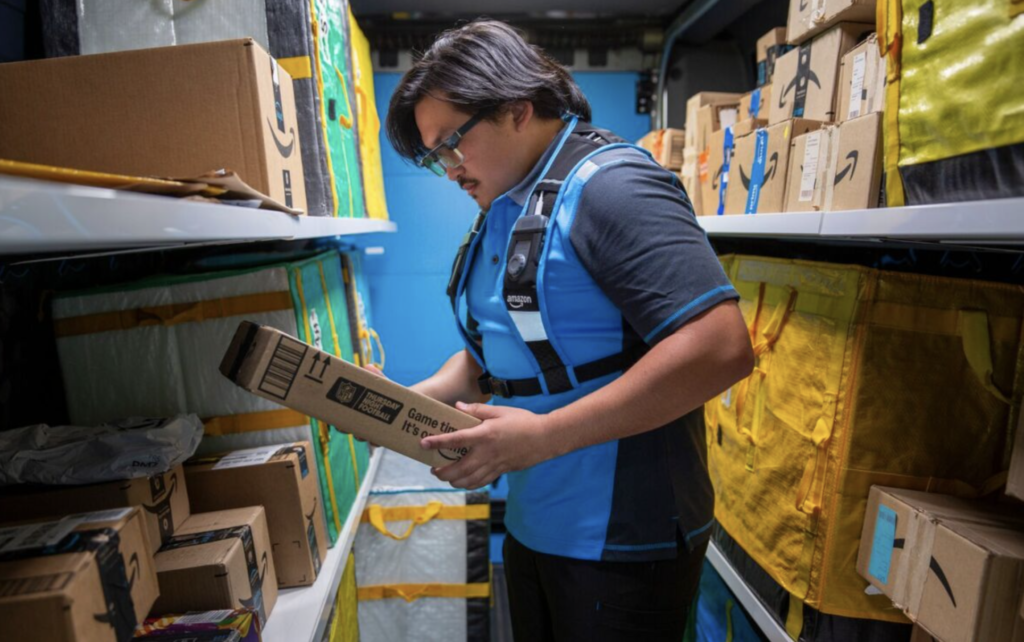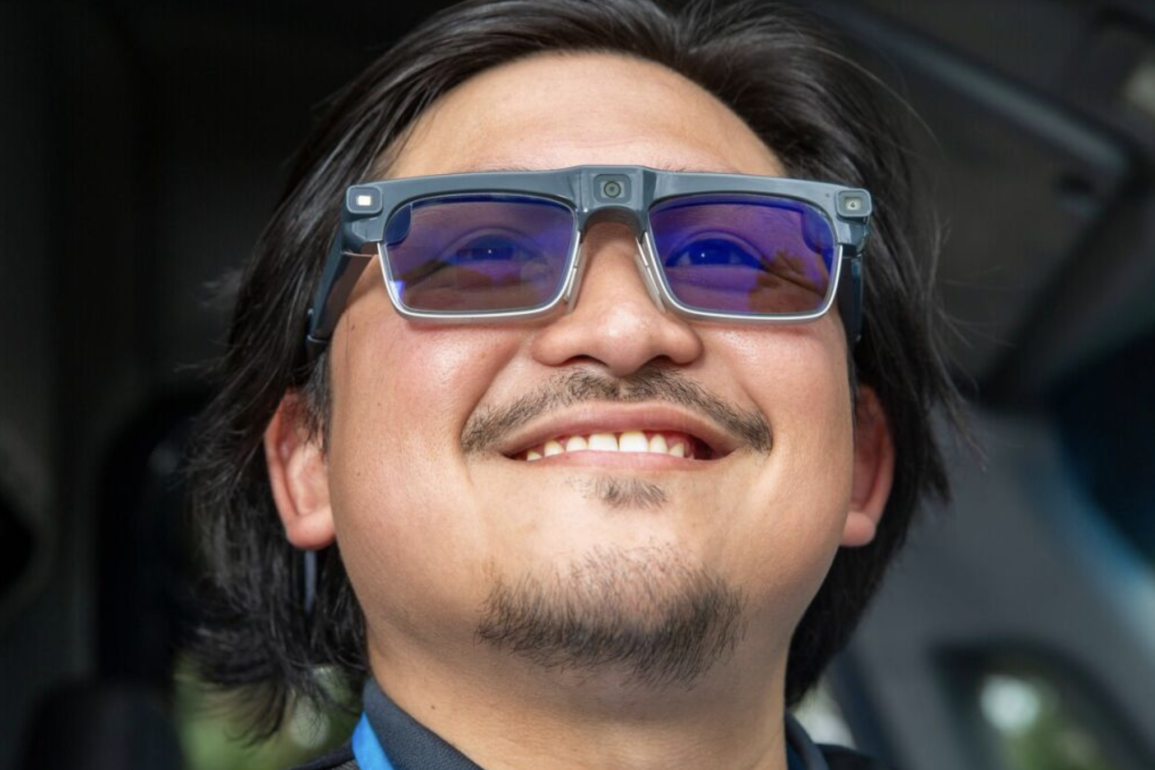On a stage usually reserved for sleek consumer gadgets, Amazon has unveiled something different: a prototype of artificial intelligence-powered smart glasses designed not for tech enthusiasts, but for its vast army of delivery drivers.
The device, called Amelia, features a built-in camera and display, and pairs with a waistcoat equipped with a button that allows drivers to capture photos of completed deliveries. The goal, Amazon says, is to make “last-mile” logistics more efficient — and perhaps a little smarter.
“We’re testing it at a number of locations with over a dozen delivery service partners and hundreds of drivers across the country,” said Beryl Tomay, Amazon’s vice president of Transportation, at the launch event in Silicon Valley.
The glasses are part of Amazon’s broader effort to weave artificial intelligence into nearly every layer of its operations — from its warehouses to the moment a parcel lands on a doorstep.
While Meta, Apple and Snap have raced to make smart glasses fashionable, Amazon’s Amelia is unapologetically functional. The company says the glasses were designed “for that use case,” as Ms. Tomay put it — referring to the rigors of delivery work.
Drivers have been “doing real deliveries with these,” she added. “We custom designed it for that use case. There’s a very specific application here.”
For now, Amelia remains a prototype, but Amazon plans to make it available to delivery partners first in North America, and later expand globally. When asked by the BBC if the glasses could one day be sold to the public, Ms. Tomay didn’t rule it out.
Inside the Tech
Footage shared by Amazon shows a driver’s-eye view from the glasses: a heads-up display highlighting delivery addresses as a worker reaches for a package. The device can recognize when it’s inside a moving vehicle, automatically shutting off to prevent distraction.
“From a safety perspective, we thought that was important. No distractions,” Ms. Tomay told reporters.
The company estimates that Amelia could save drivers up to 30 minutes per shift by cutting down on repetitive tasks and making it easier to locate packages inside delivery vans. The glasses also come with a physical hardware switch that turns off all sensors — including the camera and microphone — giving drivers the choice to “keep it off,” Ms. Tomay said.

Amelia’s debut comes as Amazon doubles down on automation and AI across its supply chain. Alongside the glasses, the company unveiled a robotic arm designed to work beside warehouse employees, sorting parcels faster and more accurately.
The robot, already operating in a South Carolina facility, is meant to “reduce injuries and maximize the use of space,” according to Amazon. The firm is also rolling out an AI system in its warehouses that analyzes “historical and real-time data across a building to anticipate bottlenecks and keep operations running smoothly.”
Together, these developments reflect a vision of logistics where human workers and intelligent machines operate in tandem — the former wearing AI on their faces, the latter sorting the boxes they deliver.
A Crowded Field of Smart Glasses
Amazon’s move also places it in an increasingly competitive landscape of tech firms reimagining what wearables can do. Meta, the parent company of Facebook and Instagram, unveiled its own AI-driven smart glasses last month at its Meta Connect conference — stylish Ray-Bans that allow users to access Meta’s virtual assistant through voice and vision.
Unlike Amazon’s driver-focused prototype, Meta’s glasses are aimed squarely at consumers, marketed as a way to stay “more engaged in the real world” without looking down at a phone.
For now, Amelia remains an experiment — part logistics tool, part futuristic experiment in human-AI collaboration. Amazon executives acknowledge the prototype is still evolving, but they see it as a crucial step toward making delivery work safer, faster and more intuitive.
If the glasses work as intended, they could transform the “last mile” of Amazon’s global delivery network — and redefine what it looks like to be on the road for the world’s largest online retailer.
As Ms. Tomay put it, “We’re excited about what this could mean for the people who deliver for us every day.”



